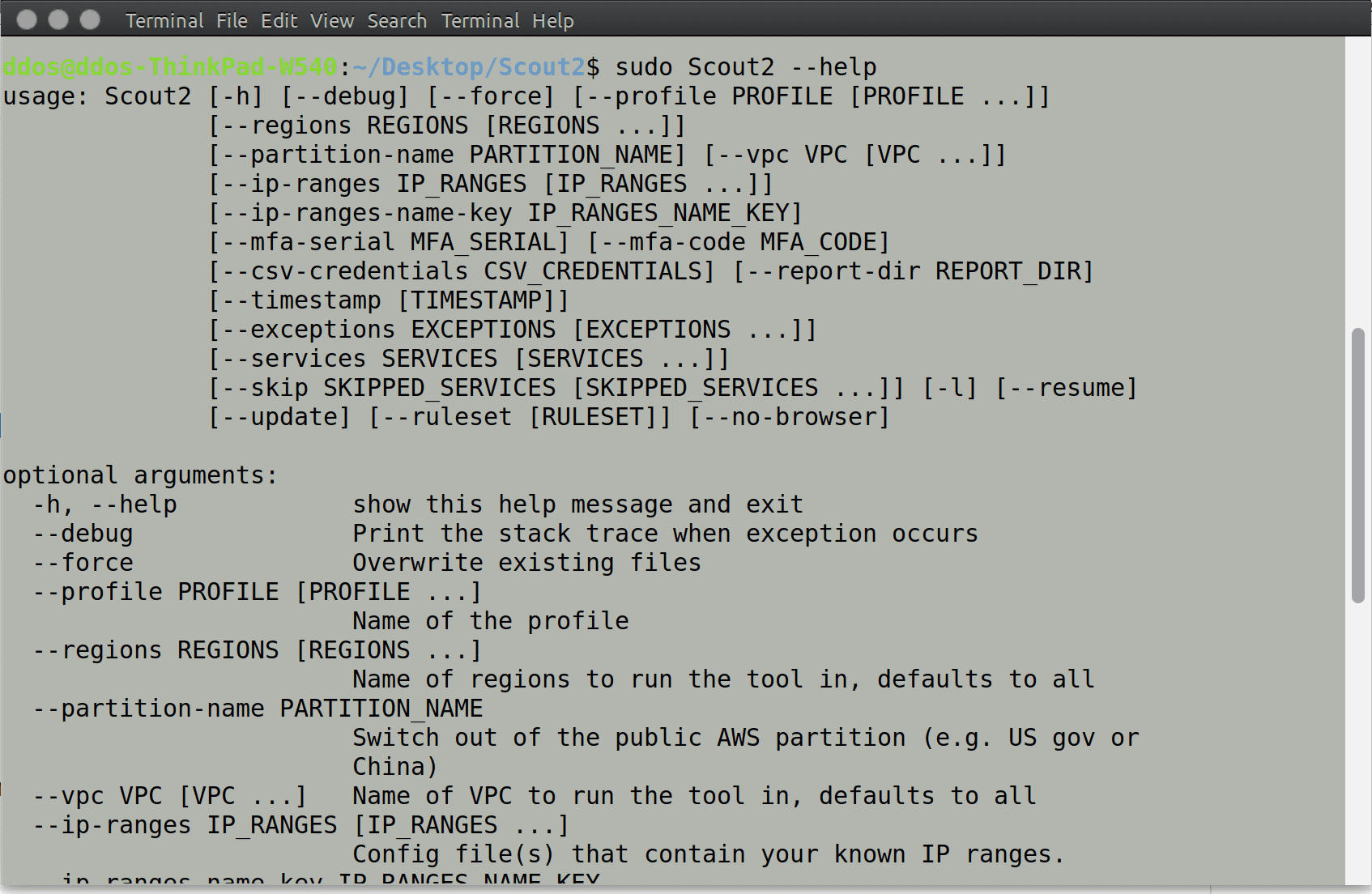
Scout2 is a security tool that lets AWS administrators assess their environment’s security posture. Using the AWS API, Scout2 gathers configuration data for manual inspection and highlights high-risk areas automatically. Rather than pouring through dozens of pages on the web, Scout2 supplies a clear view of the attack surface automatically.
Note: Scout2 is stable and actively maintained, but a number of features and internals may change. As such, please bear with us as we find time to work on, and improve the tool. Feel free to report a bug with details (e.g. console output using the “–debug” argument), request a new feature, or send a pull request.
AWS Credentials
To run Scout2, you will need valid AWS credentials (e.g Access Key ID and Secret Access Key). The role, or user account, associated with these credentials requires read-only access for all resources in a number of services, including but not limited to CloudTrail, EC2, IAM, RDS, Redshift, and S3.
If you are not sure what permissions to grant, the Scout2-Default IAM policy lists the permissions necessary for a default run of Scout2.
Compliance with AWS’ Acceptable Use Policy
Use of Scout2 does not require AWS users to complete and submit the AWS Vulnerability / Penetration Testing Request Form. Scout2 only performs AWS API calls to fetch configuration data and identify security gaps, which is not considered security scanning as it does not impact AWS’ network and applications.
Changelog v3.2.1
- Merge pull request #270 from nccgroup/issue_258
- Fix for issue https://github.com/nccgroup/Scout2/issues/258.
Installation
Usage
After performing a number of AWS API calls, Scout2 will create a local HTML report and open it in the default browser.
Using a computer already configured to use the AWS CLI, boto3, or another AWS SDK, you may use Scout2 using the following command:
Note: EC2 instances with an IAM role fit in this category.
If multiple profiles are configured in your .aws/credentials and .aws/config files, you may specify which credentials to use with the following command:
If you have a CSV file containing the API access key ID and secret, you may run Scout2 with the following command:
Source: https://github.com/nccgroup/